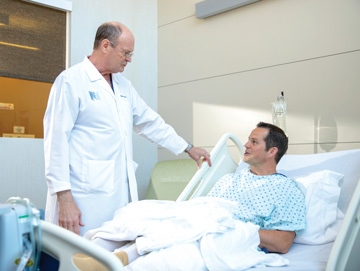When we started our outpatient spine program, every procedure we performed was out of network — not because we wanted it that way, but because none of the insurers would give us a contract to perform spine surgery in the ambulatory setting.
Thankfully, that’s changed, and payers now realize outpatient spine leads to lower infection rates, fewer complications and lower costs, as well as higher-quality care and better patient satisfaction. Your reimbursement is tightly
connected to your payer contracts, and it’s much easier to get smaller cases covered as they become mainstream in the ASC setting. But you need history and benchmarking to prove you can handle these cases and get the attention of
the carriers. When negotiating with carriers, lean on your patient outcome and satisfaction data.
You might not need to beg insurers to reimburse spine procedures done on an outpatient basis, but they do need an impeccable knowledge of their own case costs, which vary greatly based on a number of factors, including geographic location.
In general, we expect to cover case costs and make a small profit. Not every case goes as planned, and the risk for a higher cost is always possible due to lengthier-than-expected stays or the need for additional implants and biologics.
This should be accounted for in your case costing. Profit margin varies based on case acuity; the more complex cases have the potential for a higher margin, but they also carry more variability in costs.
Put safeguards in place to prevent unnecessary costs from eating away your margins. For instance, we have service contracts that state we authorize X implant only; reps can’t sell for other things. They can use whatever they’d
like, but under our contract, vendor reps can’t charge us for any unauthorized implants.
Reimbursement varies greatly from payor to payor, and the codes for outpatient spine are changing almost daily, so you need to stay on top of what your contract says and what your surgeons are doing in the OR. From a coding standpoint, these
aren’t simple procedures. There’s a plethora of codes for every case, and they can change drastically with one word. Make sure everything that was documented matches up with what was authorized preoperatively.
For instance, consider a procedure performed on a patient with a ruptured disc. Normally, you would post this as a microdiscectomy because the surgeon always does a decompression on the way into the disc. Now, let’s say that the surgeon
doing this case dictates that spinal stenosis, separate from the herniated disc, is a part of that patient’s diagnosis. Dictating that stenosis diagnosis completely changes the coding and, as a result, the reimbursement of the procedure.
As this case demonstrates, make sure surgeons are aware of this small but significant distinction.
Bottom line: Know all of your case costs like the back of your hand, review payer contracts with a fine-toothed comb and keep everyone in the loop about proper authorization for the ever-changing reimbursement landscape. OSM
.svg?sfvrsn=be606e78_3)

.svg?sfvrsn=56b2f850_5)